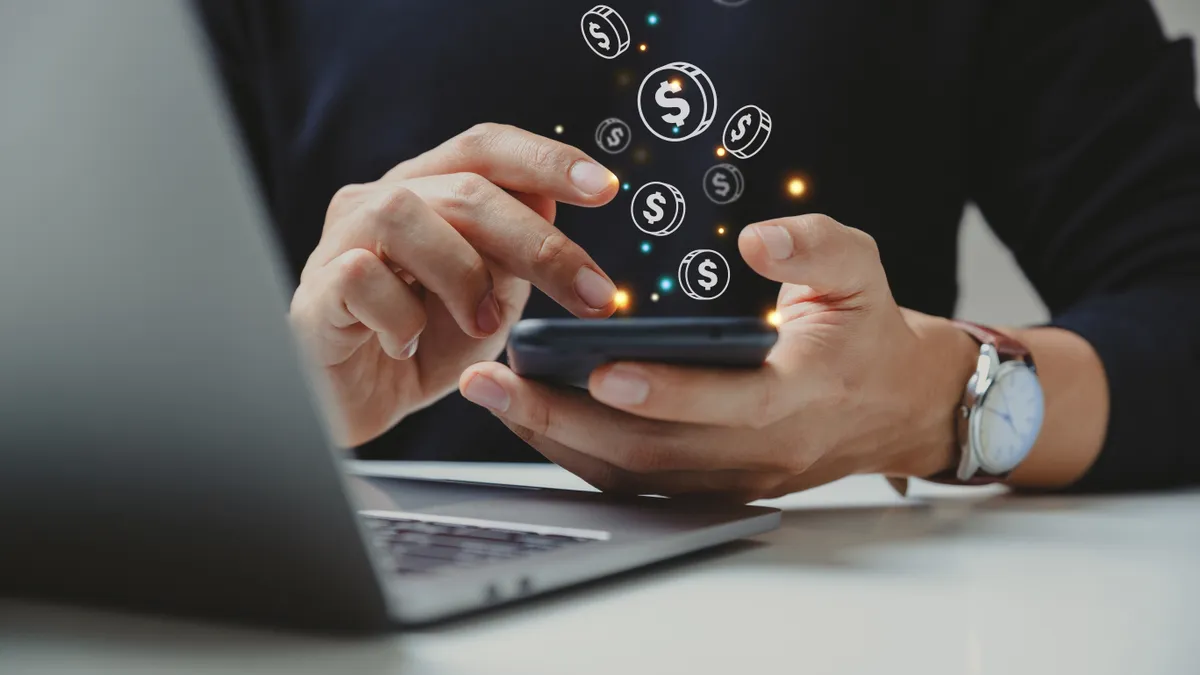Micropayments are poised to become more popular next year, but that’s predicated on the rise of bank-based payments, according to an analyst at advisory firm Forrester.
A micropayment is typically a small-value payment made online at the point which a consumer seeks access, said Lily Varón, a principal analyst on Forrester’s digital business strategy team. One example would be paying a small amount to read a magazine article online, rather than paying the full subscription price.
Forrester’s Predictions 2024: Payments report, published Oct. 30, projects micropayments will have their moment next year, becoming an alternative to subscriptions. What constitutes a micropayment is “a hotly debated question,” Varón said. “Is it under $15? Is it under $5? What’s that value? No one has agreed upon it, but it's just a small value.”

Forrester predicts that a global content provider will begin offering micropayments next year, to offset subscription cancellations. In the U.S., bank-based payments need to gain steam before micropayments can truly take off, but there are increasing signs that’s on track, Varón noted.
There’s “this new appetite for customer experimentation with new experiences, but also this growing trust in these fintechs and these point solutions for digital experiences around payments,” Varón said. She spoke with Payments Dive Oct. 27.
Editor’s note: This interview has been edited for brevity and clarity.
PAYMENTS DIVE: Can you tell me more about the micropayments prediction?
LILY VARON: It's a really juicy one, because in the payments world, micropayments have gone hot and cold over the course of decades. Especially in the U.S., where we're so card-centric in the way that we do payments, making micropayments work in a card-based mechanism is really hard. It's so expensive to process a card-based payment that the small value of the micropayment – you never recoup.
In the report, we make some predictions about account-to-account payments and open banking, and that really has to happen first, before the micropayments piece takes off.
What we'll see in the U.S. is maybe not a micropayment boom in 2024, but that account-to-account and open banking-based payments is setting the stage for the micropayments piece to come down the line. Where we might see more micropayments action is in the markets where bank-based payments are already quite mature and where we're starting to think about extending those use cases for them.
We might see somebody with a global footprint who has mature businesses in markets like Latin America or Europe, where we’re starting to see a lot more innovation on the back of open banking – they might bring that stuff to the U.S., too.
Can you provide an example of micropayments use?
It would be like if Netflix decided to say, OK, you don't want to subscribe, but you're gonna pay $1 to see this episode, or I don't want to subscribe to Hulu, but Hulu has the rights to this one thing I know I want to watch. So things like that, where they break open the rigidity of this flat fee for an all-you-can-eat buffet, and break it up into smaller pieces. Or if we think about content providers, like magazines and newspapers, where it's like, I don't want to subscribe entirely to The New York Times, I just want to read this one thing.
What else is behind the micropayments boom prediction?
There are a few things that are going to happen all at once. Bank-based payments are the underpinning. They're kind of the anchor of this prediction. The cost of processing has to be low enough to make this a sustainable mechanism, and the cost of processing a bank-based payment is cheaper than the cost of a card-based payment.
But also, the mechanics of accessing this account. I’m not going to input my bank account number and my routing number in order to pay for an article that I want to read. So we need open banking intermediaries and more to come into play so that connecting the account is seamless. But there needs to be enough trust or awareness on the part of the customer to use the bank in the first place, to make a payment like this. In the U.S., we've been historically quite hesitant to use our bank to make payments. It feels very vulnerable to do so.
So, a lot of things have to happen at once, but they're happening. Because now bank-based payments are becoming easier, and they're becoming more available. And they're becoming simpler to do and use because of solutions like Plaid and others that make logging into your bank or linking bank accounts easy, instead of having to wait four days for those micro-deposits to be there.











